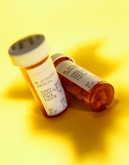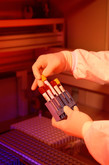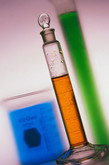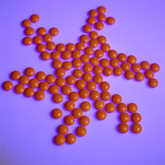Generics
Hospira recalls overfilled hydromorphone hydrochloride vials
Hospira first alerted FDA in April and May 2012 of overfilled cartridges containing morphine and hydromorphone. Subsequent investigation by the company has revealed that as many as 280 batches of 15 different Carpuject pre-filled cartridge products, which were manufactured between June 2010 and February 2012, could have contained more medication than is stated on the label [1].
Efficacy and tolerability of generic and brand-name atorvastatin
A generic formulation of atorvastatin was developed in Korea and approved by Korea Food and Drug Administration on 1 July 2008. This clinical trial was conducted at ten clinical centres in Korea between September 2008 and May 2010 for the purposes of marketing the generic formulation [1].
Increased use of generic statins proves cost effective in Australia
A recent study concluded that closing the statin ‘treatment gap’ using generics was cost-effective in the secondary prevention of coronary artery disease (CAD) in Australia [1].
Generics makers cannot gain access to some brand-name drugs
Generics manufacturers trying to create generics for certain drugs are having problems gaining access to samples of the brand-name drugs due to restrictions on supply put in place by FDA.
Generics sustainability to be investigated by UK DoH and industry
The British Generic Manufacturers Association (BGMA) and the UK Department of Health (DoH) have agreed to work together to investigate potential challenges to the sustainability of the generics industry in the UK.
Clopidogrel goes off-patent: last of the old-style blockbusters
The blockbuster drug Plavix (clopidogrel), used to prevent clotting in some heart patients, comes off patent in the US on 17 May 2012, bringing to an end the run of spectacularly well-selling traditional medicines.
Generic atorvastatin could save NHS GBP 350 million a year
Generics of Pfizer’s blockbuster cholesterol treatment Lipitor (atorvastatin) could save the National Health Service (NHS) in the UK a whopping GBP 250 million or more during the coming years, following loss of patent exclusivity.
Can generic competition succeed at reducing cost of atorvastatin?
The generic form of the cholesterol-lowering drug Lipitor (atorvastatin) has the potential for significant cost savings for payers following its introduction in November 2011. However, ‘aggressive business tactics’ by Pfizer may stifle generics competition and so prevent prices from falling as much as predicted.
Also noted on generics: 11 May 2012
Out-of-pocket expenses decline in US
Patients with insurance spent US$1.8 billion less on out-of-pocket expenses for medicines in 2011 compared to 2010. In 2011 patient’s out-of-pocket expenses totalled US$49 billion compared to US$50.8 billion in 2010.
The average co-payment also declined, especially for seniors participating in the Medicare Part D program. The average co-payment for unbranded generics was US$5.63 and US$10.34 for Medicare Part D and other insured patients respectively. This compares to brand-name medicine prices of US$37.61 and US$40.35 respectively. In fact, in 2011, more than 75% of medicines carried a co-payment of US$10 or less.
Source: IMS Institute
Sandoz to gain generic dermatology specialist Fougera
Swiss pharma giant, Novartis, announced on 2 May 2012 that the company had signed a deal for Sandoz, its generics unit, to acquire speciality generics dermatology business Fougera Pharmaceuticals (Fougera) for US$1.525 billion in cash.












